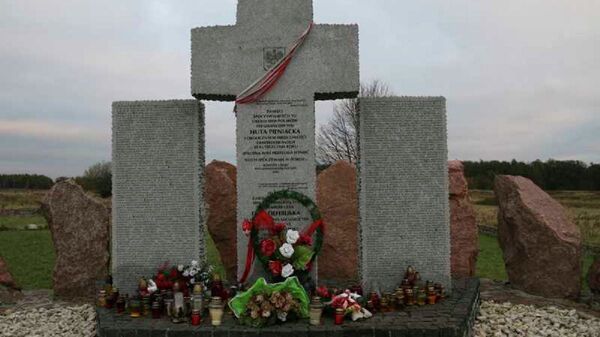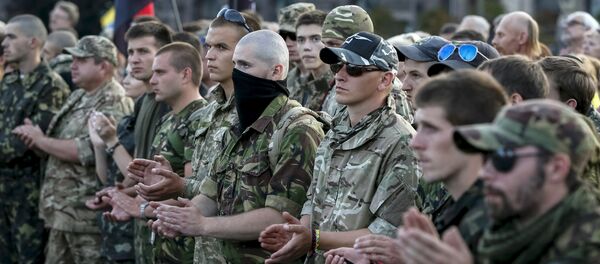"This is our common, difficult history, which many Ukrainians do not know about, but which is widely known about in Poland…It is a simple message. I want to remind both Poles and Ukrainians about these events," Poznański, an MP from the center-left party 'Your move' told local media, according to newspaper Lubelski Kurier.
The billboard, which Poznański said was his own personal initiative, is set to be installed near the heavily-used border crossing at Hrebenne-Rava-Ruska, located in Poland's southeast, near the western Ukrainian city of Lviv.
The massacre of Polish civilians in Volhynia and Eastern Galicia took place between 1943 and 1944, and was carried out by the fascist collaborationist Ukrainian Insurgent Army (UPA), with the peak of the massacres occurring between July and August 1943. Historians estimate that between 55,000 and 120,000 Poles, most of them women and children, were executed across hundreds of Polish settlements in the area, usually in a brutally shocking manner, with UPA militia burning down villages and using knives and axes rather than bullets to execute their victims. The massacre was in line with the ideology of the Stepan Bandera faction of the Organization of Ukrainian Nationalists (OUN), which outlined in its platform dating back to 1929 the need to brutally eliminate all non-Ukrainians from the future Ukrainian state.
Poles: remember forever of Volhynia Massacre performed by Ukrainian fascists http://t.co/qPuOKdzXx1 pic.twitter.com/PTYXjaSTsO
— Alexander Fedotov (@alexfed_uk) 23 августа 2014




